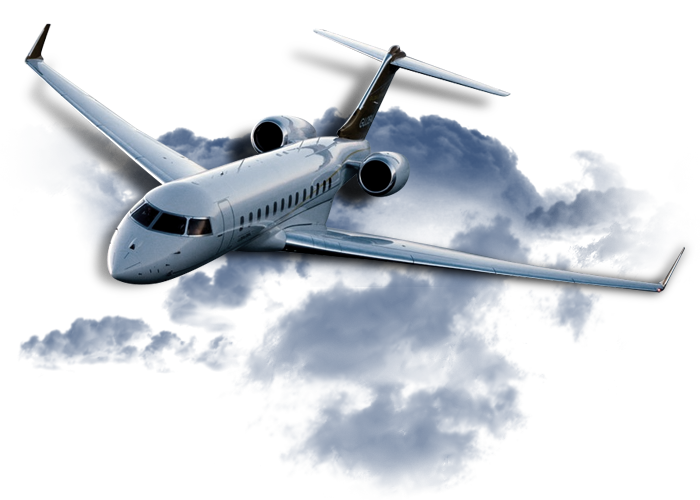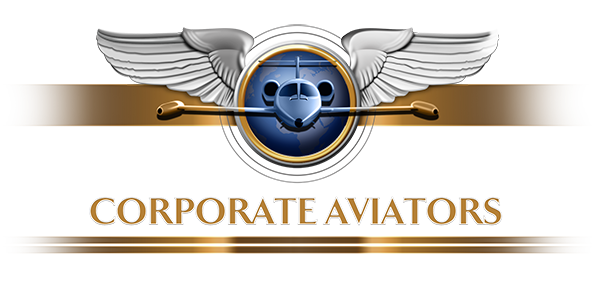Michael Schittenhelm of Ferry Flights International
"Ferry Flights are daunting. Even knowledgeable aviation people don't appreciate it's not a jolly flight!"
You are usually up before dawn and then fly at high altitude with no discernible ground features until the midday fuel stop – and then on again until evening. By the time you have spent three hours at the airport refuelling for the next day, paying up to five different kinds of fees at three different offices at the airport, you only see your hotel room late at night with the restaurant most likely shut at that time. The only sights you get to see are the airport and the airport hotel. The following days it's the whole thing all over again.
Sometimes (too often!) the aircraft has no working auto-pilot or radar – and they expect you to fly through the ITCZ. So we have to hand-fly all the way, with our free hand holding maps and charts or coffee. Every time we look up we are nearly upside down.
It takes years of flying experience to know when not to go on – from a mechanical or metrological point of view. The average death rate for ferry pilots is about 32 per annum worldwide because it's done by aircraft salesman and young hour building pilots.
Typical problems include running out of fuel, inadequate working cockpit resources, aircraft being abandoned by the crew for various reasons, having run out of money because of under-quoting the job, getting locked up because of clearance breaches and being grounded because of ‘faulty' aircraft documentation. Then there is the breaking of local laws for example by not having two hours fuel on landing at the Oceanic Islands. The list of problems and pitfalls goes on and on.
Breakdowns can be very hard to repair at remote airports and even the bigger airports have very limited general aviation support facilities.
Perhaps the worst part are the over flight and landing clearances – especially when you have to do at least two of those every day. Any change to the plan and it becomes a snowball of losing all your pre- planned clearances!
The trials and tribulations of flying through third world countries include bribes. If you are delayed due to mechanical, metrological or otherwise, you have to reapply for clearances which can take a week or more. Clearances are only valid for 24 to 72 hours. You get there too early or a day late and the authorities will want to impound your aircraft and extort ‘fines' in excess of US$10,000. Even in the civilised world you still have to worry about landing, overnight parking and take-off slots – even in low use airports!
Sometimes (too often!) the aircraft has no working auto-pilot or radar – and they expect you to fly through the ITCZ. So we have to hand-fly all the way, with our free hand holding maps and charts or coffee. Every time we look up we are nearly upside down.
It takes years of flying experience to know when not to go on – from a mechanical or metrological point of view. The average death rate for ferry pilots is about 32 per annum worldwide because it's done by aircraft salesman and young hour building pilots.
Typical problems include running out of fuel, inadequate working cockpit resources, aircraft being abandoned by the crew for various reasons, having run out of money because of under-quoting the job, getting locked up because of clearance breaches and being grounded because of ‘faulty' aircraft documentation. Then there is the breaking of local laws for example by not having two hours fuel on landing at the Oceanic Islands. The list of problems and pitfalls goes on and on.
Breakdowns can be very hard to repair at remote airports and even the bigger airports have very limited general aviation support facilities.
Perhaps the worst part are the over flight and landing clearances – especially when you have to do at least two of those every day. Any change to the plan and it becomes a snowball of losing all your pre- planned clearances!
The trials and tribulations of flying through third world countries include bribes. If you are delayed due to mechanical, metrological or otherwise, you have to reapply for clearances which can take a week or more. Clearances are only valid for 24 to 72 hours. You get there too early or a day late and the authorities will want to impound your aircraft and extort ‘fines' in excess of US$10,000. Even in the civilised world you still have to worry about landing, overnight parking and take-off slots – even in low use airports!
The planning of a ferry flight can only be really understood if you have done several already. Leaving out a small item at the pre-planning stage can seriously damage your health. Some are as simple as making sure your tyre pressures are correct for the runway temperatures and increased weight of ferry fuel, as with special permits we are allowed to take-off 40 percent over gross.
Most professional ferry pilots have to deal with the natural desire by owners or operators to get the job done as cheaply as possible. A typical false cost saving is when the operator insists on getting the clearances itself. A properly equipped cockpit with all the necessary clearances and equipment is essential. Thus, Jeppesen approach plates must be obtained for the entire trip, not just the take-off and destination airports. Ferry-Flights-ed--ad-2It is not uncommon for a 1300 nm leg to have been supplied with trip kits with only the departure airport, the destination airport and one alternate. So what happens if we take-off in IMC and have a mechanical failure? If we can't get back in to our departure airport, and have not been given any alternate en-route approach plates, it's simple; we die!
A typical example would be if you fly through the Far East as we need to have letdown plates en-route and 200 nm to the left or right of track to get safely back on the ground – which is often shrouded in mist and fog.
Ferry flying is not meant to be an hour builder. If you have to build hours you shouldn't be doing a ferry flight because it needs the most experienced pilot you can imagine to get the aircraft home in one piece - and not abuse or overstress it.
Most professional ferry pilots have to deal with the natural desire by owners or operators to get the job done as cheaply as possible. A typical false cost saving is when the operator insists on getting the clearances itself. A properly equipped cockpit with all the necessary clearances and equipment is essential. Thus, Jeppesen approach plates must be obtained for the entire trip, not just the take-off and destination airports. Ferry-Flights-ed--ad-2It is not uncommon for a 1300 nm leg to have been supplied with trip kits with only the departure airport, the destination airport and one alternate. So what happens if we take-off in IMC and have a mechanical failure? If we can't get back in to our departure airport, and have not been given any alternate en-route approach plates, it's simple; we die!
A typical example would be if you fly through the Far East as we need to have letdown plates en-route and 200 nm to the left or right of track to get safely back on the ground – which is often shrouded in mist and fog.
Ferry flying is not meant to be an hour builder. If you have to build hours you shouldn't be doing a ferry flight because it needs the most experienced pilot you can imagine to get the aircraft home in one piece - and not abuse or overstress it.
It's a tough way to earn a living!
High Time Pilots on:
All King Air Models
90, 100, 200, 350, 1900
Gulfstreams
II, III, IV, V
Hawkers Jets HS-125
Up to 900XP




